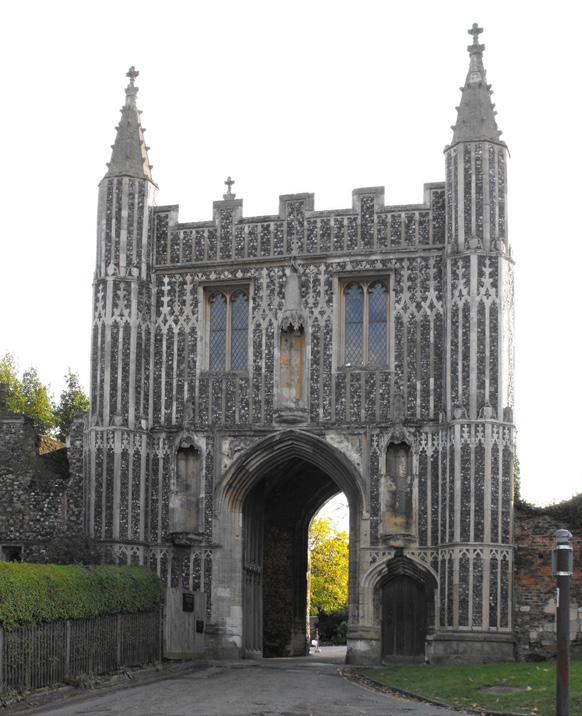
3 minute read
A Monastic Mass in Colchester
Mary Huntingdon
History was made on the Solemnity of the Nativity of St John the Baptist, when Abbot Geoffrey Scott OSB of Douai Abbey, became the first Benedictine monk to celebrate Mass on the site of St John’s Abbey, Colchester, on its patronal feast day, since 1539. The Mass took place in the Gatehouse, the last remnant of what was once the fourth largest abbey in the country.
Abbot Geoffrey, who is an eminent historian and annalist of the English Benedictine Congregation, said the Mass at noon, at the request of Jennie Guthrie-Stevens, a member of the Colchester Catholic Heritage Group and the Priory Street parish. Jennie has done much research on St John's Abbey and its history, and gained the necessary permissions from English Heritage and Colchester Borough Council for the service to take place, albeit with just six people present. The Rt Rev Alan Williams sm, Bishop of the diocese of Brentwood, in which Colchester is located, was represented by Abbot Hugh Allan O.Praem, parish priest at Our Lady Immaculate, Chelmsford, who is also Apostolic Administrator of the Prefecture of the Falkland Islands and Ecclesiastical Superior of the Missions sui iuris of the islands of Ascension, St Helena and Tristan da Cunha. Prominent Essex Catholic Lord Petre was in the small congregation, too.
Founded in 1095 by Eudo Dapifer, William the Conqueror’s High Steward and Constable of Colchester Castle, St John’s Abbey as a Benedictine foundation made a major contribution to the development of medieval Colchester and became a wealthy and privileged house, despite losing part of its buildings to fire in 1133. In the late 14th and early 15th centuries, perhaps as a result of the Peasants' Revolt of 1381, the Abbey strengthened its defences and the Gatehouse was added as part of this rebuilding around 1400. It was one of a handful of abbeys that refused to surrender to Henry VIII’s Commissioners during the Dissolution and succumbed only after the execution outside its walls of its abbot, John Beche (aka Thomas Marshall), who refused to acknowledge the spiritual authority of King Henry VIII over the Church.
Abbot Beche was beatified by Pope Leo XIII in 1895, but it is less than a decade since the first Mass was celebrated in the building on the anniversary of his death on 1 December 2012; a plaque recording the martyrdom has now been unveiled at the site. In 2015 Bishop Alan marked the 900th anniversary of the dedication of the Abbey with prayers for Blessed John Beche at the Gatehouse. Afterwards he commented that the Abbey’s destruction was a huge blow for the Colchester community: ‘For hundreds of years, it was a place of education, care for the sick and succour for the poor. It did so much for the
© Saltmarsh
A splendid gateway, but all that remains above ground of the Abbey
town’s citizens for so long. Christian faith and charity were lived here. When the abbey closed, the number of destitute people in the town increased dramatically. It was as if the welfare state was suddenly destroyed’.
Abbot Geoffrey Scott’s own community of Douai in Woolhampton is part of the English Benedictine Congregation and was founded in Paris in 1615. Uprooted from there by the French Revolution, it moved to Douai in Flanders before returning to England in 1903, bringing its name with it. A number of parishes are run from the abbey, which has an important library and archive which holds the records of a number of Religious Communities. Abbot Geoffrey teaches modern Church History at the Dominicans’ Blackfriars Hall in Oxford. He is also President of the Catholic Archives Society, Vice-President of the Catholic Record Society, a member of the Patrimony Committee of the English and Welsh Bishops’ Conference and Annalist of the English Benedictine Congregation, and has also lectured to seminarians at St Mary’s College, Oscott. A recording of the Mass can be seen at: https://youtu.be/ITXujRBZaU8










